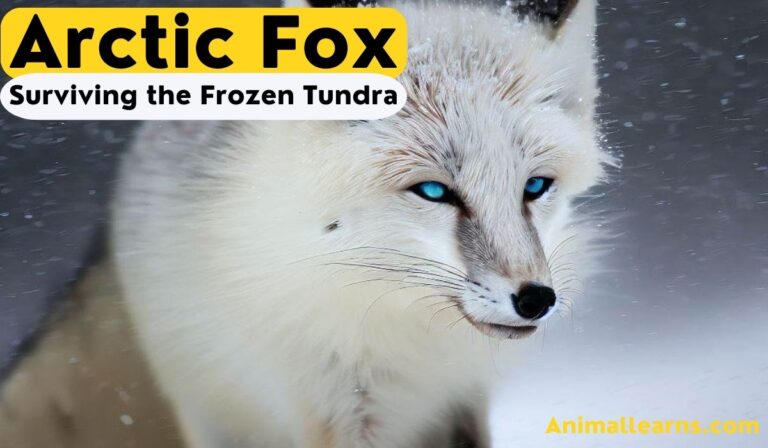Arctic Hare: Habitat, Diet, Facts (With Pictures)

The Arctic Hare thrives in the extreme northern wilderness and is one of the few mammals that inhabit the Arctic. It has developed a number of physical and behavioral adaptations that help it cope with harsh conditions and avoid predators.
They can achieve 40 miles per hour (64.4 km/h) when running with all four feet planted firmly on the ground. Arctic hares are brown or blue-gray in the summer and change white in the winter to assist blend in with the snow. They remain white throughout the year in the northernmost regions of their habitat.
Arctic Hare Appearance
Contents

Arctic hares resemble rabbits, except they can withstand extremely cold temperatures, stand taller, and have shorter ears. Their hind and front legs are fluffy and big. The coat’s color changes according to the season, however the underbelly and chest’s fur never changes from gray to white.
Hence, the fur becomes longer in the winter. With black bunches on the margins of their ears, it grows whiter, thicker, and softer. The summertime molting season is when the fur changes from brownish-grey to gray-blue. One by one, the face, feet, ears, shoulders, legs, and, at last, the back molt. Typically, male molting occurs after female molting.
Arctic Hare Population
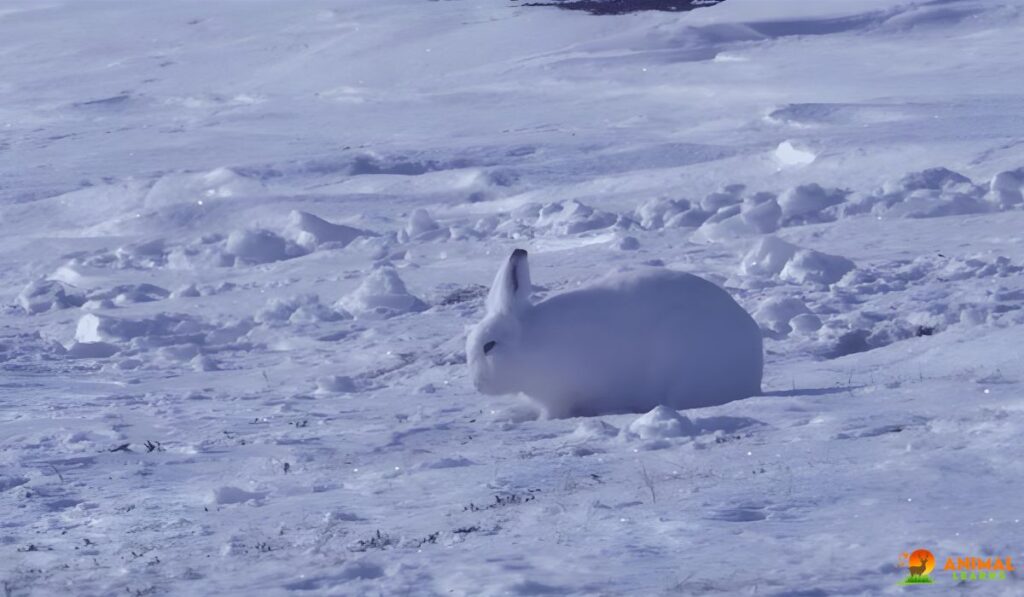
The loss of habitat, overlap with human settlements, and overhunting are the main challenges facing the Arctic hare. Regarding the latter, in addition to meat, they draw hunters because of their pelts. Native Americans make up the bulk of the hunters in the area. Furthermore, dangers associated with global warming are probably going to get worse.
The Arctic hare’s population size is not formally estimated. But if the IUCN has the Arctic Hare listed as Least Concern on the IUCN Red List, then this widely distributed animal is obviously not endangered.
Arctic hares are crucial for both seed distribution and as a source of food for nearby predators.
Arctic Hare Physical Characteristics

The Lepus arcticus, with its physical characteristics like a sturdy build and large, powerful hind legs, is an embodiment of adaptation in the harsh tundra environment.
Their fur undergoes a remarkable color change, transitioning from snowy white in winter to brownish-gray during the summer, an adaptation that provides camouflage amidst changing landscapes. This fur change isn’t the only remarkable feature; their structural adaptations include keen eyesight, essential for spotting predators or potential mates in the vast Arctic expanse.
Furthermore, they are highly adapted for survival, hibernating in burrows during harsh winters, displaying unique behaviors like hopping and boxing and exhibiting complex social behaviors within their colonies.
Habitat and Distribution
The Arctic tundra is not a place for the faint of heart. It’s a land of ice and snow, where trees can’t grow and the cold bites deep. But some animals have what it takes to live in this extreme environment, like this hare. This furry wonder has amazing features and skills that help it thrive in the tundra.
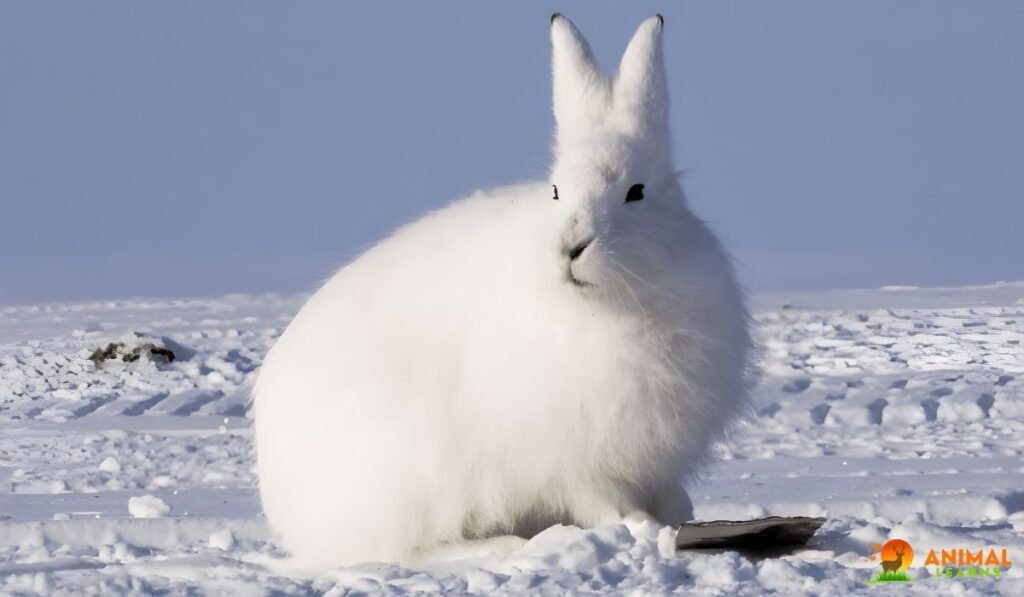
They live in the far north of the world, in places like Canada, Alaska, Greenland, and some parts of Eurasia. It crosses the Arctic Circle, where it can handle the coldest temperatures on Earth.
Diet and Predators
They can eat and survive in the freezing and snowy Arctic tundra. It has a varied diet that includes plants and animals. It likes to eat cotton grass, a nutritious plant that grows in the Arctic. It also sometimes eats meat, such as small rodents or bird eggs, when plants are hard to find. But they also have many enemies that want to eat it, such as Arctic foxes, wolves, and birds of prey.
To escape from them, the Arctic hare has some clever tricks. It can run very fast and change direction quickly. It can also hide in its burrow or under the snow. This is a wonderful example of how life can adapt and survive in harsh conditions.
Arctic Hare Fun Facts
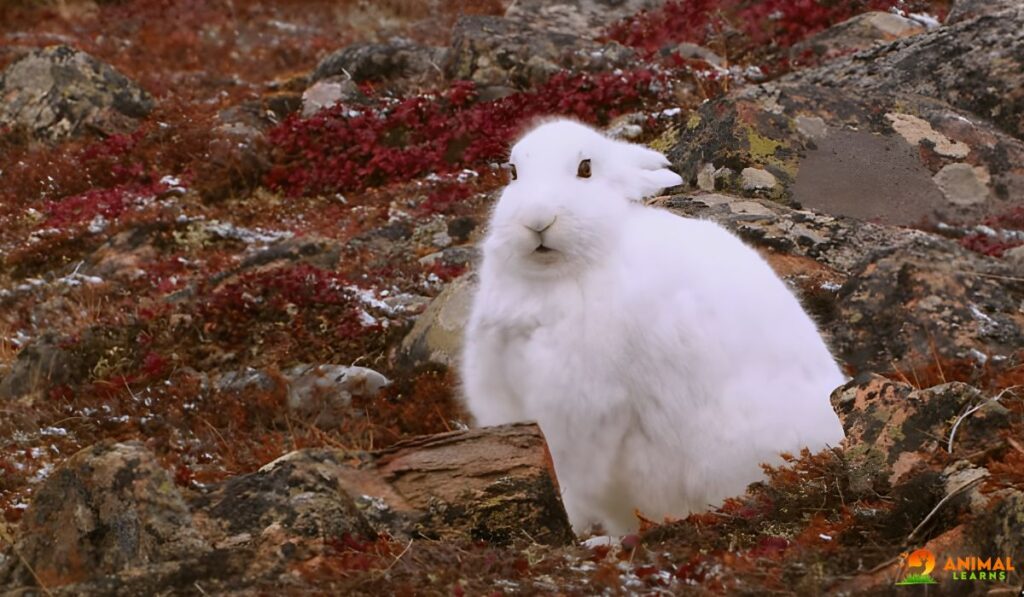
They are amazing animals that live in the frozen lands of the north. Here are some cool facts about them:
- They change their fur color with the seasons. They are white in winter and brown or gray in summer.
- They are very fast runners. They can sprint at 40 mph and jump 10 feet high.
- They are happy and playful. They do binkies, which are leaps and twists in the air.
- They eat plants. They munch on grasses, mosses, berries, and roots.
- They can survive the cold and the predators. They have thick fur, large feet, small ears, and a short tail. They also have sharp senses of smell, hearing, and vision.
- They are big. Males can weigh up to 11 pounds.
- They are social. They live in colonies for warmth and protection.
- They breed quickly. They can have many babies when the conditions are good.
- They live in burrows. They use underground dens for shelter.
- They are part of the Arctic ecosystem. They interact with other animals and plants in complex ways.
arctic hare Mating
Arctic hare are polygynous, male Arctic hares mate with multiple females each breeding season. The gestation period lasts roughly 50 days, and the mating time occurs in the spring, typically in April or May. Consequently, a female gives birth to two to eight children in May or June. Every pair that mates has a specific area.
Newly born hares have eyes open and all of their fur on. Because of their precocial nature, they can support themselves quickly after birth. Leverets remain within their mother’s home range until they are able to subsist on their own after weaning, which typically happens at the age of 8 to 9 weeks.
arctic hare adaptations
Anatomically, the arctic hare has a relatively low surface area to volume ratio. Like many animals from colder climates, it is stockier built and has proportionally shorter limbs and ears than its cousins from warmer climates. Their volume might lose heat from a smaller surface area.
The arctic hare’s coat is consistently thick and extremely insulating. In order to more easily blend into the landscape all year round, those hares in the southern sections of their territory acquire two unique coats over the course of a year: white in the winter and blue-grey in the summer.
The hares that reside in the northernmost regions of their range never lose their white coat, even throughout the summer. These help the animal distribute its weight when walking on soft snow, protect it from the cold, and offer traction on slick terrain.
In extremely cold weather, they seek cover in tunnels they dig in the earth or beneath the snow (behavioral) – Digging a tunnel beneath the snow to get more insulation from the snow and to avoid the biting wind is a pretty quick and simple technique to avoid the worst of the weather.
Although it’s still below freezing outside, the temperature inside the snow hole might be significantly higher because it’s protected from the chilly wind.
Behavioral and Environmental Adaptations
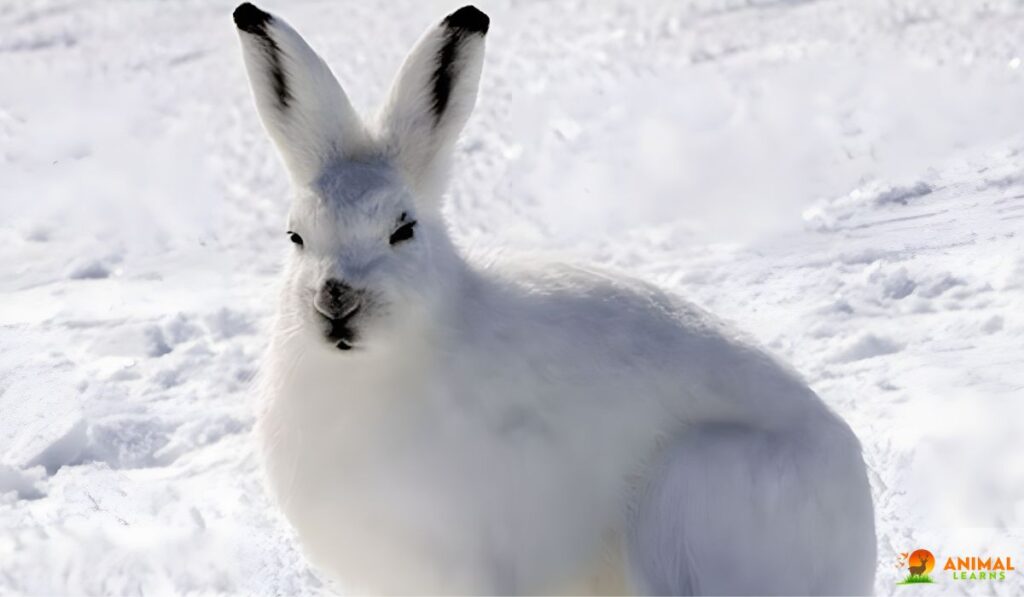
This is an amazing animal that can survive and socialize in the freezing and snowy Arctic tundra. It lives in large groups called herds, where it communicates and bonds with other hares using sounds and movements. It also fights and boxes with other hares for different reasons, such as showing who’s the boss, protecting its home or partner, or competing for food or resources.
These behaviors help the Arctic cope with the challenges and opportunities of living in one of the most extreme places on Earth. This is a fascinating example of how life can adapt and interact in harsh conditions.
They have masterfully adapted to the unforgiving Arctic ecosystem, making it their home year-round. Their behavioral adaptations are evident in their ability to forage for a variety of tundra vegetation, ranging from grasses to mosses, ensuring they can sustain themselves in resource-scarce environments.
These hares are also part of intricate ecological interactions, participating in predator-prey relationships with Arctic foxes and competing with other herbivores for limited vegetation resources. Their remarkable survival instincts, robust physical attributes, and resilience in the face of extreme cold and relentless predators make them a key species in the Arctic ecosystem.
Conclusion
This is an amazing animal that has some incredible adaptations that help it survive and thrive in the Arctic tundra. It has white fur that helps it camouflage with the snow, fast and flexible foraging skills that help it find food, and complex social behavior that helps it communicate and cooperate with other hares.
There is still much to discover about the Arctic hare and its amazing adaptations, which can benefit many fields of study and inspire us to appreciate the wonders of the natural world.
FAQs
How do Arctic Hares Survive Extreme Cold?
They survive the extreme cold by having thick fur that changes color with the seasons, keeping them well-insulated.
What is special about these animals?
They are specially adapted to their extreme environment, with thick fur that changes color, helping them blend into the snowy landscape during winter.
Is the Arctic a bunny?
While they are both members of the rabbit family, they are distinct from bunnies. They are larger and have adapted to cold Arctic environments.
What are two interesting facts about hares?
They can run at high speeds, reaching up to 40 miles per hour. They are also known for their “binkying” behavior, where they jump and twist in the air, displaying joy.
What do they eat?
They primarily eat vegetation found in the tundra, including grasses, mosses, and woody plants.











